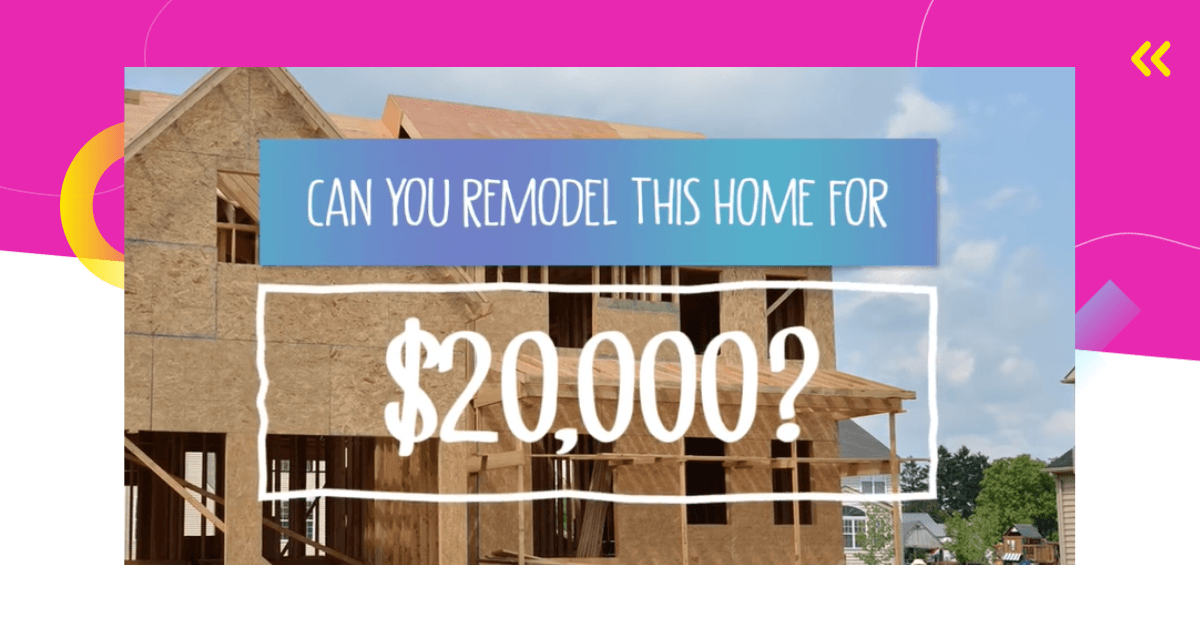Did you know that more than half of mobile gamers are women?
CrowdStar is a game studio that took notice of that very early on and created a great game for the female audience that’s popular with both genders – Design Home.
In our Design Home analysis, I answer the question of how this interior game managed to stay so successful? Hint – the answer lies in its marketing strategy.
But first, here’s some info on Design Home and its KPIs.
About Design Home
Design Home by CrowdStar Inc. (acquired by Glu) is a relaxing interior design game that belongs to the simulation genre. Players can live out their dream of designing homes, express their creativity, and work on decoration skills. It’s a lot like The Sims but focused solely on interior design.
Furthermore, players have access to popular furniture brands and can explore many different styles. The game is simple – players get an empty room they need to decorate and submit for voting. Completing daily challenges unlocks new and exciting features that are designed to keep the engagement up. Because other players vote for your designs and you vote for theirs, there’s an element of competition here, as well as a social aspect.
All of it looks very professional, which allows players to immerse themselves in the fantasy of being an interior designer.
Gamified Advertising
What’s unique about Design Home is that it features real brands and furniture. For example, brands like West Elm, Kathy Kuo, Pottery Barn, and others.
This accomplishes two things.
One, it makes the game more realistic. And two, it allows the publisher to earn additional revenue from promoting said brands. It’s a win-win situation.
Many people who play this game use it as an inspiration for decorating their actual homes, so I bet many of them were motivated to buy from these brands in real life.
It’s unknown how much money the publisher earns for these promotions, but I’m guessing it’s not an insignificant number.

How Successful Is Design Home?
Design Home is not a new game – it’s an established game that was released back in 2016. In fact, Design Home was one of the pioneers of mobile interior design games. Even though it was released 5 years ago, this game still manages to keep existing players as well as grow their user base further.
To show you just how successful this Design Home is, I’ve compiled some data you’ll find interesting.
Unless stated otherwise, the data in this article comes from an internal source.
Top Simulation Games on Google Play
Currently, Design Home is one of the top-grossing free simulation games on Google Play store. It’s followed by Klondike Adventures, and Redecor: Home Design Game, which is very similar to Design Home and its main competitor.
Top Simulation Games on App Store
On Apple’s App Store, Design Home is one of the top-grossing free simulation games as well, along with Project Makeover, which is indicative of the subgenre’s popularity.
Top Simulation Games by Total Downloads 2020
When it comes to top simulation games in the customization subgenre by absolute downloads for 2020, Design Home was number 1 with 6 million downloads in that year.
Design Home Category Rankings
In the middle of 2020, Design Home was the number 1 free simulation game on Google Play. After that, the rankings went down slightly, then rapidly declined in January 2021 (dropping by hundreds of places). After that, the rankings improved massively, and Design Home was once again among the top-ranking simulation games.
All-Time Design Home Downloads by Country
So far, Design Home has been downloaded more than 92 million times, which is outstanding. As expected, most downloads come from the US (37%).
From the 2016 release, all the way up until now, there were many ups and downs when it comes to downloads. However, new users were coming consistently and it’s obvious that this game is still very much popular.
All-Time Design Home Revenue by Country
Design Home’s net revenue chart shows a steady growth throughout the years. In other words, the revenue just keeps on increasing year over year.
So far, Design Home has earned a total of $411 million in revenue.
That’s all thanks to Design Home’s monetization strategy.
Just like the downloads, the most revenue comes from the US (75%). Other profitable markets for this game are Canada, Australia, Great Britain, France, and Germany.
Daily Active Users (DAU)
It’s one thing to acquire players, but keeping them is a whole different challenge. DAU metric tells us how successful Design Home is at keeping players engaged and coming back.
In May 2020, daily active users peaked at 1.2 million, which is an impressive milestone. After that, DAU for Design Home went on a steady decline. So far, in 2021, there were between 400k and 600k daily active users each month.
User Retention
Design Home has decent user retention. However, it could be better. After day 1, 29% of players remain.
Day 7 retention for Design Home is 10% and day 30 retention is just 5%.
Let’s compare it to user retention of the top 2% simulation games. (Data source: Benchmarks+)
In 2020, the top simulation games had day 1 retention of 49% on average. After 7 days, it was around 19% and after 30 days, it was 9% on average. That’s almost double the user retention Design Home has.
Session Count
If we look at the session count metric, most Design Home players play once or twice a day (29% and 22% respectively). This may be due to the game’s setup and monetization strategy. There’s a limited number of daily challenges players can complete. Furthermore, that becomes harder to accomplish when users don’t have the necessary resources (keys) but don’t want to spend on in-app purchases.
However, there’s a group of very engaged users who have between 9 and 14 sessions a day (11%).
Average Session Duration
The average session duration metric tells us the length of these sessions.
In general, player sessions in Design Home are quite short. 13% of users play for 10 seconds or less.
29% play for 11 to 60 seconds on average. The majority of players play between 1 and 30 minutes (57%). Just 1% of users play for more than 30 minutes.
This is a Design Home metric CrowdStar needs to improve.
If we compare it to the top 2% of simulation games whose ASL in 2020 was around 1 hour, we can conclude there’s still room for improvement. (Benchmarks+)
Daily Time Spent
Finally, here’s how much time people spend playing Design Home on average in one day.
The majority of players spend between 1 and 30 minutes playing this game (59%). Furthermore, 7% of users spend 30 to 60 minutes playing and 10% spent 1 to 10 hours on Design Home a day. This shows that there is a small, but significant, number of very engaged users who spend a lot of time playing this game every time.

Who Is Playing Design Home?
You’re probably wondering, who is playing Design Home? This is another important question we need to answer before we get into Design Home’s user acquisition strategy.
Here are some stats.
Player Demographics
The majority of Design Home players are women – 76%. The remaining 24% are men.
Furthermore, 17% of players are younger than 24. 35% of players are Millennials. 22% are between the ages of 35 and 44. 24% are older than 45.
The data tells us that the main target audience for this game are women between the ages of 25 and 34, i.e., Millennial women.
To learn more about Design Home’s target demographic, we need to understand why this game primarily appeals to Millennial women.
Why Millennial Women Love Design Home?
What made this game better and unique right from the start is the fact that CrowdStar managed to create a game that appeals to many women, without relying on gender stereotypes too much. Other games made primarily for a female audience at that time were about cute animals or dressing-up games full of glitter.
Design Home is not “cute” or “pink”, but rather speaks to more nuanced interests this demographic has.
First of all, the game has a professional, elegant, and sleek design, which speaks to a more mature audience, instead of children.
Furthermore, this game is not just about living out your dream of being an interior designer.
It’s much more than that.
Put simply, Design Home allows Millennial women to live out their fantasy of owning a home and being able to afford fancy furniture.
As we know, so many Millennials are stuck in not-so-glamorous rentals, while watching perfect houses of rich influencers on Instagram. Design Home is their escape, inspirational mood board, a glimpse of a life they wish to have.
“There’s something shameful to it, to the blatant capitalist nightmare of a game that’s 90% an ad to a market that is unlikely to ever actually own a home. Each time I try to stop playing, they introduce a new home for players to furnish for themselves.” – Wil Williams.
Since there are a lot of emotions involved in this game, it gets easier to monetize it. I’ve read many accounts of women who say they’ve never imagined they’ll become someone who spends on in-app purchases, but Design Home managed to convince them otherwise.
“I’m not exactly sure what it is about the game that keeps me coming back for more. Maybe it’s those bizarrely evocative little micro-fictions about the rooms that let me, just for a minute, inhabit another life where I can afford nice furniture and/or real-estate.” – Anna Silman
Lastly, Design Home is not an exclusively female game, as a significant percentage of men enjoy it as well. So even though women aged 24 – 34 are the main target audience, and now we understand why, this game has a broad appeal. This also contributed to this game’s success.
Design Home Analysis: Advertising Strategy
Now that it’s clear why Millennial women love this game so much, it’s time to explore Design Home’s advertising strategy. In this section, I’ll attempt to analyze what techniques are used to acquire players from this target demographic.
Design Home Analysis: Top-Performing Creatives
Design Home #1
This is currently the top-performing Design Home creative and it’s running on several different ad networks.
Here’s what makes it so good.
The main challenge of this ad is “Can you remodel this home for $20,000?” This is the first thing that appears, along with an “Accept” button. Starting with a challenge is a smart way to engage viewers and motivate them to keep watching.
Additionally, this is a challenge many Millennials encounter in real life.
Then it goes into remodeling and decoration. The pointer hand chooses new wall color, carpet, furniture, etc., to make the room look better.
Because of the pointer hand, the ad feels very immersive. In other words, it makes the viewers feel like they’re the ones playing it. That way, they get the full game experience by watching the video.
After the second design is finished, there’s a message – “You’re a pro!”. Once again, this helps to get people in that fantasy of being an interior designer.
The end screen is sleek and nicely designed, just like the rest of the video. It consists of the game title, logo, “Design and relax” slogan/CTA, and the app store badges.
Design Home #3
The ad above has a similar concept to the previous one – it’s also about making over a room for grandma.
The video has a very clever and effective design. On the top, we have grandma, along with her age and favorite colors. On the bottom, there’s her room the pointer hand is decorating.
And it’s a fail – we see the grandma above disapproving. She hates the design.
As you might have noticed, a lot of mobile game ads in many different genres end up with a fail. It’s a common trend.
Why?
It’s simple – it makes the players think they can do better. Plus, watching someone fail can be amusing.
Design Home #4
Here’s another challenge for wannabe interior designers – “Can you build this kitchen from scratch?”.
We see it go from stripped down to beautifully decorated and looking fantastic. For people with an interest in design, those transformations are what gets them going. Plus, having a blank canvas they can exercise their creative skills on is the dream.
This is what makes the ad (and the game) so appealing. However, it should be noted that this is not genuine gameplay footage. It has been enhanced with different animations so that the video looks more polished.
Design Home #5
You might notice there’s a recurring theme in Design Home ads – they’re all based on design challenges, just like the game.
In this creative, the challenge is to makeover a room with furniture from a popular luxury brand Williams Sonoma Home.
This shows players that furniture available in the game is existing furniture from real brands. I would say that’s the game’s USP, so it makes sense to highlight it.
Design Home #6
The ad above has a different concept than the rest. It’s all about showing why Design Home is better than similar games.
That’s accomplished with a split-screen video – other games are on the left and Design Home is on the right.
However, what’s a bit confusing is that the left side of the screen looks identical to the right one. In other words, the room, the furniture, and the design are exactly the same. The only difference is that in Design Home, you level up. That doesn’t seem like a big enough difference. It’s not that effective in emphasizing the differences.
What I like about this creative is the ad copy – “Free up your creativity with the #1 home decorating game”.
Design Home #7
Everybody has thought about what their dream home would look like, at least once. It’s something many people fantasize about, especially Millennials, many of whom are struggling to achieve that dream.
A game like Design Home allows players to live out that fantasy and build the home of their dreams. That is demonstrated in this ad. It’s a clever choice because it speaks directly to player motivations and interests.
Fullscreen Image Ads
To finish off, I have included a couple of full-screen image ads for Design Home.

The ad above is interesting because it acknowledges the current situation everybody is in – spending most of their time at home due to Covid-19. It cleverly states, “Staying in is the new going out.”
On the left, we see a young woman on her phone. And on the right, a game screenshot that depicts a lavishly designed patio, and a “Play Now” button.
The ad copy says, “Can you help flip this house?”.
This image ad accomplishes several things:
- It speaks to the target audience (Millennial women)
- Encourages people to stay in due to coronavirus
- Recommends Design Home as a great pastime because now people have more free time to play mobile games
- Challenges players in the ad copy and motivates them to play

This ad is based on choices, which is a common strategy for mobile game ads. There’s a room that’s missing a couch. On the right, there’s a question, “What’s the best choice”, along with a pointer hand and two different couches.
It makes the viewers think about which couch would fit better in this room. In other words, it’s all about simulating what it would be like to be an interior designer. Professionals in this field make this kind of choice every day and get to exercise their creative and strategic skills.

Design Home Analysis: 5 Things You Can Learn From This Game
To summarize our Design Home analysis, here are the top five user acquisition lessons you can learn from this game.
- Know your target audience well (their age, gender, location, interests, behavior, etc.).
- Come up with creatives based on the interests and motivations of your demographic.
- Make sure the creatives are well-designed, branded, and easily recognizable.
- Highlight the game’s USP in ads, as well as different features.
- Add unique challenges in creatives.
Final Thoughts On Our Design Home Analysis
There’s no question that Design Home is still a massively successful simulation game. That has been proven time and time again.
That’s largely due to the publishers understanding their target audience, connecting with them on an emotional level, and using that to create irresistible ads.
If you want to become as successful as CrowdStar with Design Home, make sure to reach out. User acquisition and mobile game marketing is what we do best.
For more mobile game analyses, go to our dissections page.







Comments